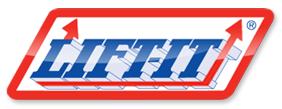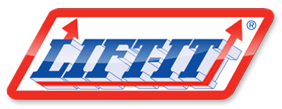|
Slings exposed to abrasion and cutting are the single greatest source of accidents, injuries, death and destruction. Synthetic slings are not the absolute solution for all rigging applications. The proper approach should always be to use the “right” sling for the job to minimize risk and exposure.
All slings have limitations. Synthetic slings are susceptible to heat damage and damage from cutting and abrasion. One may improperly rationalize and conclude that chain, wire rope and/or wire mesh slings should be used in all harsh situations, which preclude the use of synthetics. Chain, wire rope and wire mesh slings are not totally “bullet” proof in all applications and can also be damaged.
ASME B30.9-2006, Section, 9.X.10.4(d), Rigging Practices, Chapters 1, 2 and 3 stated that Chain, Wire Rope and Wire Mesh slings should be padded with adequate materials to protect the sling. The sling protection language in the ASME Sling Safety Standard-Rigging Practice section is similiar in Chapters 4, 5 and 6 for synthetic rope, web and roundslings, except, should (a recommendation to be considered in Chapters 1, 2, and 3), was changed to shall, a mandatory rule of the standard for all synthetic slings. The ASME B30.9-2010 Sling Safety Standard requires that all synthetic slings shall be protected from damage.
“Sharp” was removed from the ASME B30.9-2006 Sling Safety Standard and had previously been removed from the Web Sling and Tie Down Association- Recommended Standard Specification for Synthetic Web Slings (WSTDA-WS-1-2004). The ASME B30.9 subcommittee and the WSTDA-Web Sling committee removed sharp from their publications because the edge need not be “razor” sharp to damage any type of sling. Compression and tension combined with a “moderate” edge and non-positive sling to load engagement, i.e., the sling skipping across the load edge, can result in sling damage and failure. It is important that responsible parties protect all slings from damaging load edges and surfaces with protection materials sufficient for the application and rig to properly control the load.
Another common misconception is sling protection devices will perform equally well when subjected to abrasion and/or cutting. It is important to realize that abrasion protection materials, designs and technology work differently from those methods taken to provide protection from cutting.
Web slings can have a 12,800 pound per inch, basket Work Load. Twin-Path® Extra, High Performance Fiber Slings can have a 25,000 pound per inch, basket Work Load. Testing conducted by Slingmax®, Unirope® and Lift-It® evaluated various sling protection materials and constructions. The results are featured on page 44. Four protection devices provided a sling protection “performance design factor” above the maximum 25,000 pound requirement: CornerMax® Pads, CornerMax® Sleeves, Mesh Guard® and Magnetic Corner Protectors.
I believe the initial steps of developing performance ratings for sling protection devices by visionaries: Dennis St. Germain, Gary O’Rourke, Knut Buschmann and the author will profoundly influence the direction of the sling and rigging industry. The Web Sling and Tie Down Association, has completed testing to determine the effects of various sized edge radii on web and roundsling strength. The results for roundslings are included in WSTDA-RS-1(2010) Recommended Standard Specification for Roundslings. The results for web slings are being evaluated by the Web and Testing committees of the WSTDA. The aforementioned radii tests and test protocol under consideration by the WSTDA may provide the basis for establishing protection ratings for various forms of engineered protection devices.
The sling user, inspector, loss control, safety and qualified person(s) must continue to be responsible and be involved in the selection, evaluation and proper application of protection devices. There is no form of protection that is cut proof; poor load control can render the best protection impotent.
We encourage all sling users to act responsibly and to evaluate sling protection devices and slings in a non-consequence set of circumstances. Test lifts can easily be made at minimum heights to determine sling protection adequacy. Slings and protection must be removed, inspected and evaluated after each test lift. Several “test” lifts may be necessary to determine the best sling, method of rigging for load control and sling protection devices to ensure success.
Remember, Successful Rigging = Successful Living.
|

